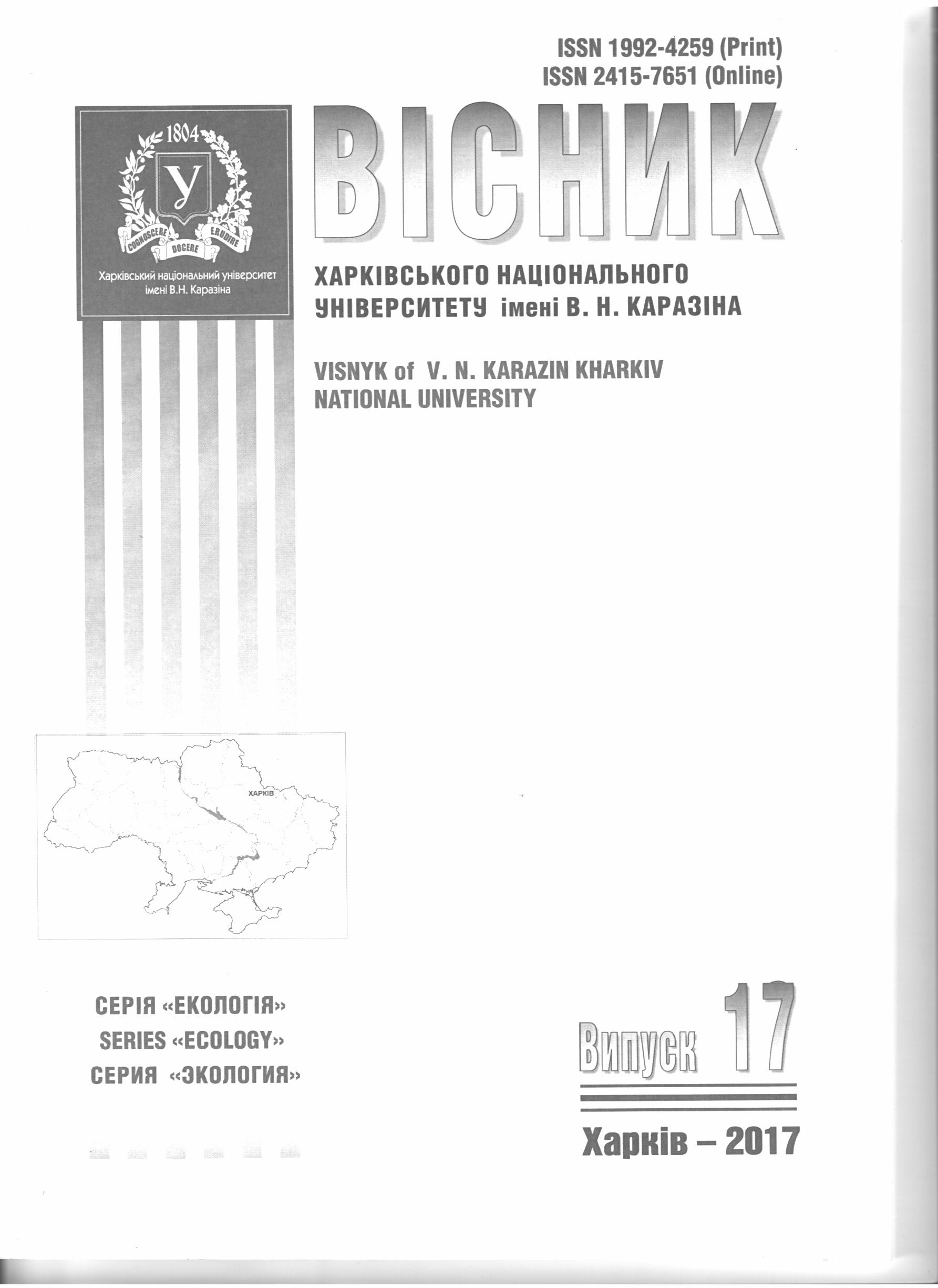Characteristics of bacterioplankton in the Kuyalnyk estuary development in 2015-2017
Abstract
Purpose. To study changes in the Kuyalnik Estuary bacterioplankton number in 2015-2017 under the influence of abiotic factors in conditions of controlled experiment consisting at the estuary refilling with marine water. Methods. Number of microorganisms in the Kuyalnyk Estuary and the adjacent water-bodies/watercourses has been studied. Method of direct count of microorganisms under microscope has been used. Results. Bacterioplankton number in the Kuyalnyk Estuary varied within very broad limits (1.4∙106 cell/ml - 140∙106 cell/ml); it was 1-2 orders of magnitude higher than in marine water and fresh watercourses entering the estuary. Dynamics of the two years’ set of observations has shown sharp changes of bacterioplankton number in the estuary; in 2016 it decreased in the average 2.2 times compared with 2015. Bacterioplankton number distribution in the estuary has shown quantitative prevalence in the bottom layer, which evidences arrival of microorganisms into the bottom layer from bottom sediment. Results. To our mind the sharp changes in bacterioplankton number in the Kuyalnyk Estuary were connected with several factors: on one hand intensive archaea development in 2015 could have been provoked by the changes in the environment caused by the estuary refilling with marine water; on the other hand, sharp decrease in microorganisms number in 2016 were caused by gypsum sedimentation and gypsum crust forming on the estuary floor, which practically suspended all the exchange processes between water and the bottom for some time.
Downloads
References
2. Романенко С.И., Кузнецов С.И. Микрофлора Сиваша некоторых соляных промыслов Крыма. Физиология водных микроорганизмов и их роль в круговороте органического вещества. Л.: Наука, 1969. С. 8–13.
3. Oren A. Diversity of halophilic microorganisms: environments, phylogeny, physiology, and applications. J.Ind Microbiol Biotechnol. 2002, Jan; 28(1): 56-63
4. Рубенчик Л.И. Микроорганизмы и микробиальные процессы в соляных водоемах Украины. К.: Изд-во АН УССР. 1948. 118 с.
5. Исаченко Б.Л. Микробиологические исследования над Грязевыми озерами. Избр.тр., Т.2. М-Л., Изд. АН СССР. 1951. С. 26-142.
6. Ma1 Y, Galinski E. A, Grant W. D, Oren A, Ventosa A. Halophiles 2010: Life in Saline Environments. Appl. Environ. Microbiol. November 2010, vol. 76. no. 21. 6971-6981.
7. Oren A., and Gurevich P. 1995 Dynamics of a bloom of halophilic archaea in the Dead Sea, Hydrobiologia, 315: 149-158.
8. Post F.J. 1981 Microbiology of the Great Solt Lake north arm. Hydrobiologia, 81:59-69
9. Белкина Н. Ф. Роль донных отложений в процессах трансформации органического вещества и биогенных элементов в озерных экосистемах. Труды Карельского научного центра РАН, № 4. 2011. С. 35–41.
10. Северо-западная часть Черного моря: биология и экология / Под ред. Ю.П.Зайцева, Б.Г.Александрова, Г.Г. Миничевой. К.: Наук. думка. 2006. 701 с.
11. Добрынин Э.Г. Микробиологические процессы круговорота органического вещества в гипергалинных водоемах/автореферат дисс. к.б.н. по ВАК 03.00.07. Борок. 1984. 24 с.
12. Буторин А.Н. Активность микрофлоры на границе воды и донных отложений// Взаимодействие между водой и седиментами в озерах и водохранилищах. Л.: Наука, 1984. С. 248-253.
13. Израэль Ю.А., Цыбань А.В. Антропогенная екология океана. Л.:Гидрометеоиздат. 1989. 528 с.
14. Разумов А.С. Прямой метод учета бактерий в воде. Сравнение его с методом Коха. Микробиология. 1932. Т.1, № 2. С.131-146.
15. Mедінець В.І., Ковальова Н.В., Дерезюк Н.В., Снігірьов С.М., Черкез Є.А., Медінець С.В., Газетов Є.І.Біологічні наслідки поповнення Куяльницького лиману морською водою з Одеської затоки. Людина та довкілля. Проблеми неоекології. 2017. № 1-2 (27). C. 35-51.
16. Ковалева Н.В. Бактериопланктон воды Куяльницкого лимана в 2013-2015 гг. / Н.В. Ковалева, В.И. Мединец . Матеріали Всеукраїнської науково-практичної конференції «Природно-ресурсний потенціал Куяльніцкого та Хаджибейського лиманів, території міжлимання: сучасний стан, перспективи розвитку»; ОДЕКУ; УКРМЕПА – Одеса: ТЕС, 2015. С. 65-68.
17. Заика В. Е. О трофическом статусе пелагических экосистем в разных регионах Черного моря/Морской экологический журнал, №1, Т.II, 2003. С. 5-11.
18. Методика екологічної оцінки якості поверхневих вод за відповідними категоріями. В.Д. Романенко, В.М. Жукинський, О.П. Оксіюк, та ін., К.: СИМВОЛ-Т, 1998. 28 с.
19. Дерезюк Н.В. Фітопланктон Куяльницького лиману у 2015-2017 рр. Людина та довкілля. Проблеми неоекології. 2017. № 1-2 (27). C. 52-61.
Authors who publish with this journal agree to the following terms:
- Authors retain copyright and grant the journal right of first publication of this work under the terms of a license Creative Commons Attribution License 4.0 International (CC BY 4.0).
- Authors are able to enter into separate, additional contractual arrangements for the non-exclusive distribution of the journal's published version of the work (e.g., post it to an institutional repository or publish it in a book), with an acknowledgement of its initial publication in this journal.
- Authors are permitted and encouraged to post their work online (e.g., in institutional repositories or on their website) prior to and during the submission process, as it can lead to productive exchanges, as well as earlier and greater citation of published work.





